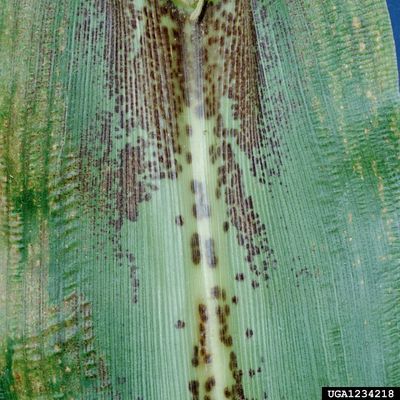What is Sweet Corn Brown Spot?
It is very easy to detect brown leaf spot in sweet corn, which is caused by the pathogen Physoderma maydis. Bands of very small round or oblong yellow or brown spots will be seen across the leaves, while the midrib of the leaves will display clusters of dark purplish to black oval spots. Upon further inspection, you may also observe the darker colored spots clustered on the stalk, leaf sheath, and husks. Some of the leaf spots may form blister-like pustules full of powdery sporangia, which overwinter in the infected corn tissue. It is said that they can survive in soil and crop debris for 2-7 years. The sporangia have the potential to release multiple zoospores with tails. These zoospores then swim to infiltrate and infect the next unsuspecting corn plant when the conditions are right. What are the right conditions, you ask? Like most fungal infections, moisture and high temperatures are the catalysts. This is often the case during rainstorms, when spores are splashed into areas of the plant where moisture tends to pool, such as at the base of the leaf blades or whorls. It is at these locations where symptoms of brown leaf spot in sweet corn will be the most prevalent.
Treating Sweet Corn with Leaf Spots
Sweet corn brown spot is not really a threat, which means that the enjoyment of your summer corn on the cob is not really in jeopardy. Infection of corn crops is typically sporadic with negligible effect on yield. Given that sweet corn brown spot is fungal in nature, you may think that an application of fungicides is the answer. In this case, not necessarily so. There is, as of this writing, no definitive research on the efficacy of fungicide treatments for sweet corn brown spot or guidelines on the frequency or rate of application. The best way to manage brown leaf spot on corn is via tillage (to bury the disease inoculum) and crop rotation.
